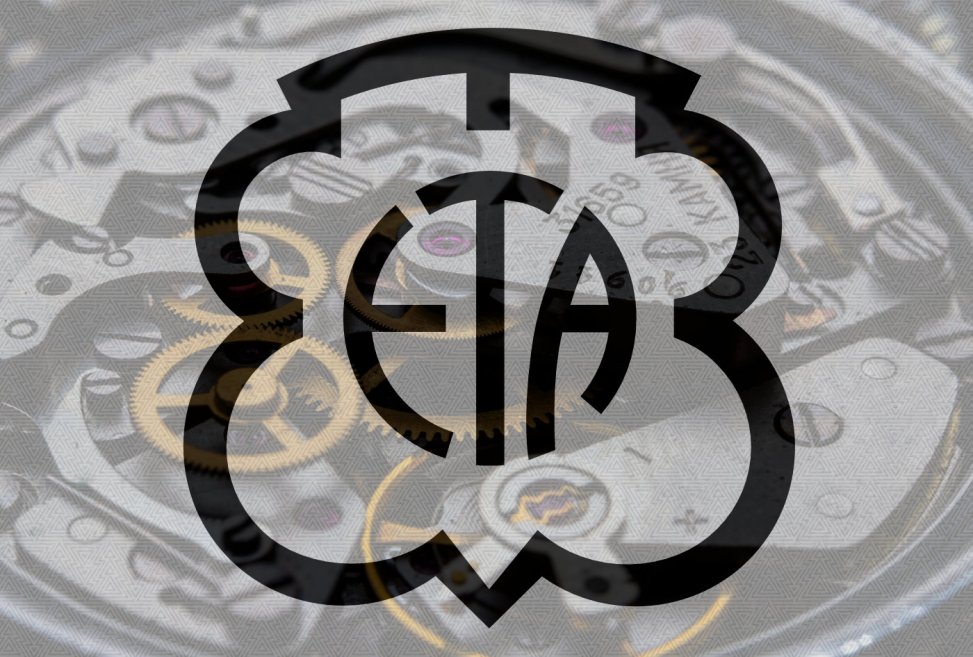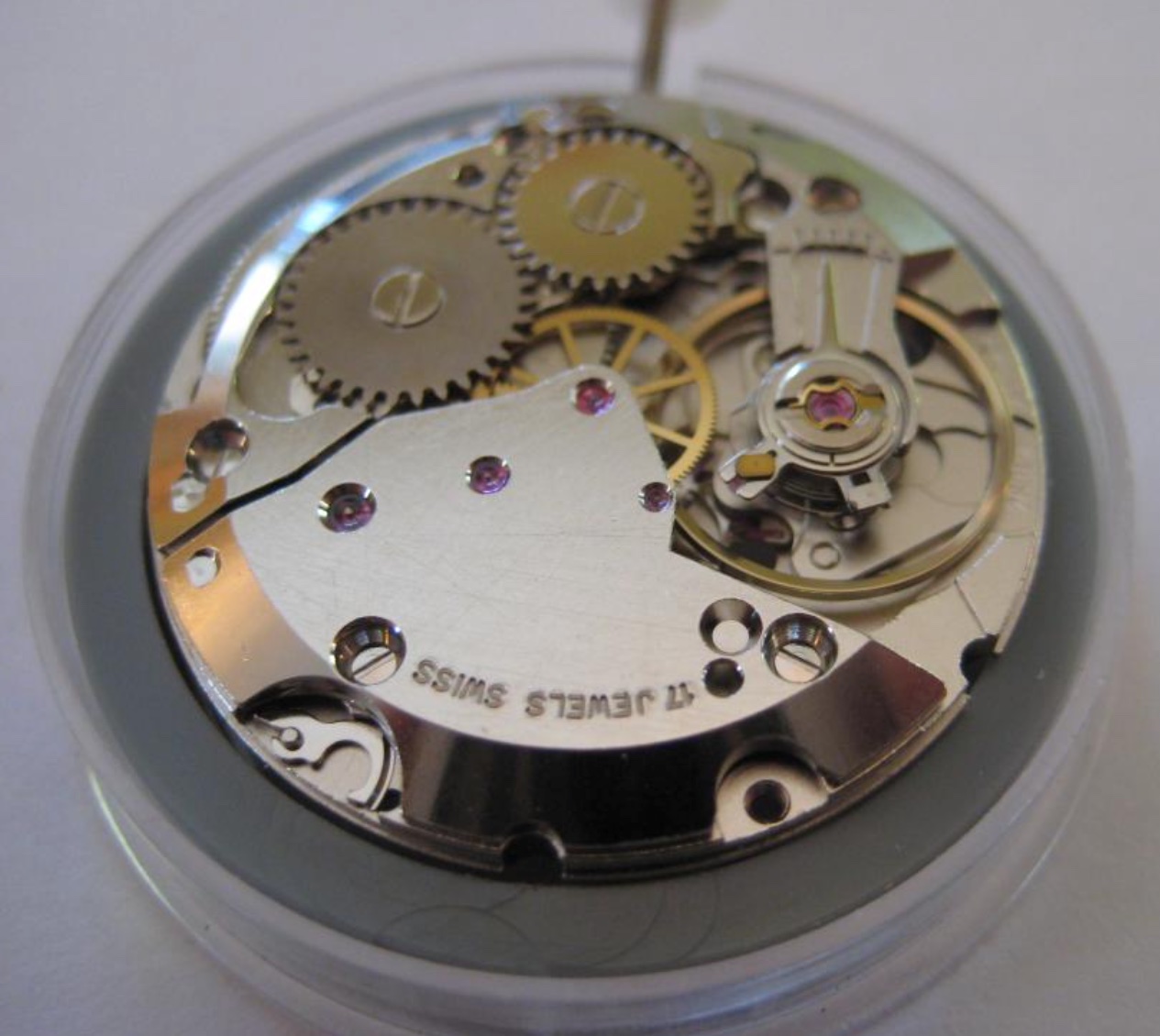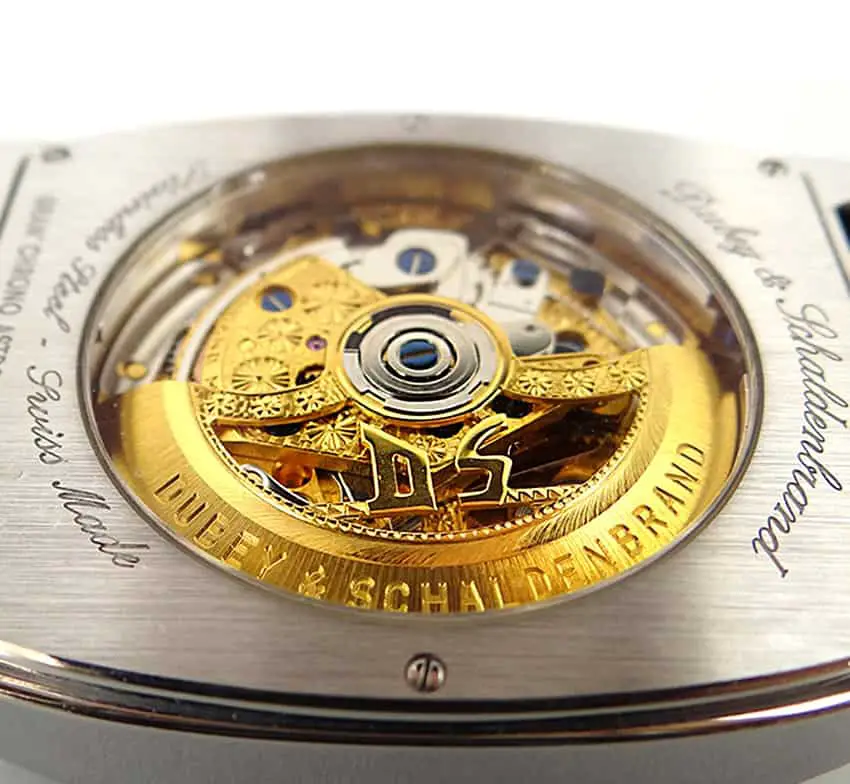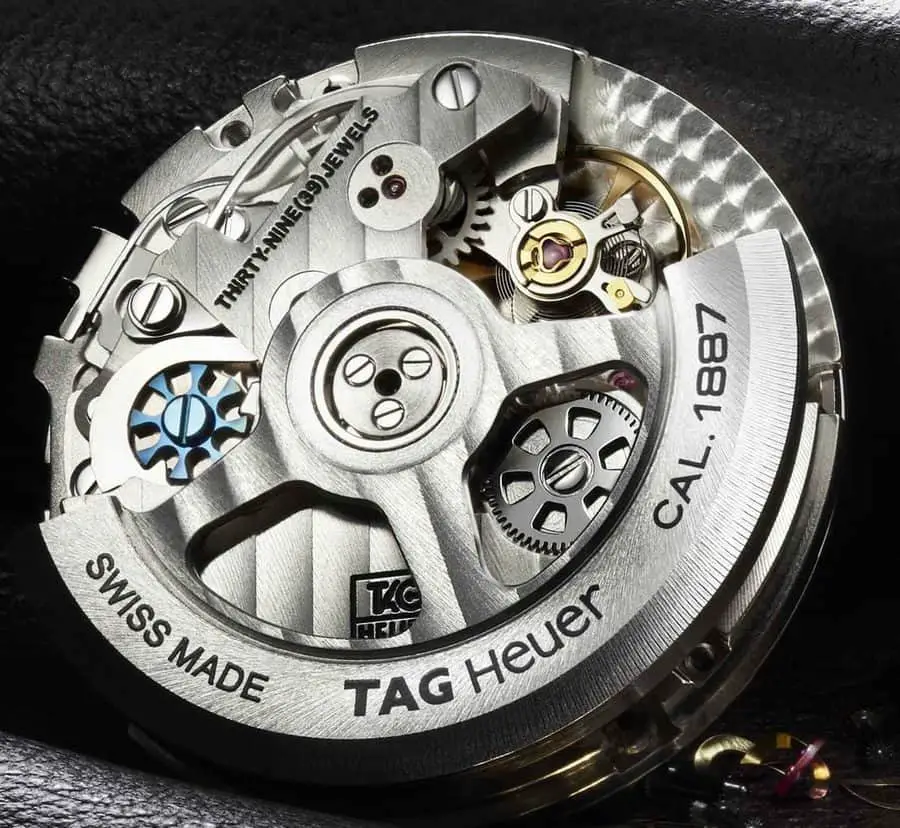Watches with ETA movement are the most looked-for and appreciated. This is because ETA has been on the market for long and people trust it. What’s the history of the ETA movement? What are the watches that have it? Can anyone afford a watch with ETA movement?

The ETA watch movement is a mechanism by which a watch that features it measures and shows the time. It can be either mechanical or quartz, ébauche or a variation of these calibers. It’s being said that movement is the heart of any watch.
In the opinion of many, the ETA movement is the one that beats all the others when it comes to reliability and accuracy. It helps the watch industry to “tick” and to advance.
The workings of an ETA movement can vary according to the type of mechanism in the watch. A quartz caliber can’t function the same as a mechanical one.
Why is the ETA movement so Special?
The ETA movement is build to meet the strict standards of the COSC which makes it extremely accurate and ideal for dive watches. In terms of accuracy, the ETA movement is tested to only lose +/-1 second per day as compared to an inexpensive movement which can lose up to +/-30 seconds a day.

On top of that, what makes the ETA movement so special is the quality of barrel spring, shock resistance capabilities, balance wheel, hairspring, regulator and pallet stones. These are the key components which only ETA movement provides that allows such accuracy and reliability of its calibers.
There are many types of ETA movements available, each for a specific type of watch. While one type of ETA can be found only on chronographs, others are designed for self-winding or strictly for mechanical watches. Either way, they ETA movement is the most widely used by all brands.
The ETA movement is in most of the relatively pricey watches available on the market. This doesn’t mean it’s high-end. In fact, the prices of watches that feature can greatly vary.
The ETA movement has been called a workhorse in the watch industry. People are choosing it over in-house movements because its reputation is truly impressive.
A Little Bit of History
The ETA movement has been invented in 1856, by Urs Schild and Dr. Joseph Girard, when the ETA SA Manufacture Horlogère Suisse was also created. Most of the watches nowadays feature the ETA movement, either in quartz or mechanical calibers, ébauche or only partial.
All the luxury brands have adopted this movement in order to make their watches work. In 1876, ETA SA Manufacture Horlogère Suisse became Eterna, only to split in two in 1932:
- Eterna SA that was making watches
- ETA SA that was making ébauche
ETA was bought and sold many times over the years, in the end becoming a subsidiary of Swatch that’s still supplying movements to other brands.
Of course, there are companies that make their own movements, yet most of them prefer to modify the ETA one because it can be expensive, and it can take them a lot of time to design their own caliber.
As some people say, the movements created in-house can be more creative and original, but this doesn’t mean they’re better.
Are ETA movements good?
Many agree that the ETA movement is still the best one out there, especially when it comes to mechanical watches. Whereas many of the ETA competitors have gone out of business when the quartz caliber entered the market in 1980, this company has managed to remain in power.
Looking at the watch industry, ETA definitely holds the monopoly. In order to remain the best, they acquire every other ébauche manufacturer that poses a threat to them.
Some would argue that ETA movement is one of the most precise and accurate, whereas others say that ETA is better than what Rolex does.
In-house movements are more preferred by those who are ready to spend much more than others could afford on a watch, so it can be said the ETA movement is perfect for people who want to own a good watch that can last them for a lifetime and maybe more.
One thing’s for sure, this isn’t a movement to need repairs. Not only it has tradition, it’s also owned by one of the largest watch manufacturers in the world.
Its history proves that the ETA movement is not only reliable and good at keeping track of time, but also suited for luxury watches. As a matter of fact, many of the very expensive watches have ETA.
How many ETA movements are there?
Even though ETA movements are popular and available in many watches, there are many who haven’t heard of the ETA movement, or perhaps they don’t know they own a watch with it. There are numerous ETA movements and we will be looking into some of the popular ones here.
The most popular quartz, mechanical and ébauche calibers in ETA movement are 2824 and 2892, followed by 7750.
ETA 2824 for Reliability
When it comes to the most well-known ETA movement, the 2824 is definitely the one. More than this, it has been declared to be the most reliable, accurate and durable.

It has the reputation of being constant, no matter how the watch is being positioned.
Besides, it’s being used by many brands because the spare parts are not at all expensive. Its power reserve goes for 38 hours and is self-winding, present in brands like Breitling and Tudor, Raymond Weil and Mühle Glashütte.
ETA 2892 is Slim

ETA 2892 is considered pretty similar with 2824, but it’s much more elegant and slimmer in its built, also mostly found on chronographs. Many say it’s even better than the movement in Rolex watches.
Since it is thinner than other movements, the ETA 2892 works perfectly on the most intricate of the watches. Different manufacturers use it because they either don’t know how to produce their own movements or don’t have the necessary resources.
Brands that use ETA 2892 are Omega and IWC, Tag Heuer, Baume & Mercier, Longines.
ETA 7750 Valjoux

The most appreciated ETA remains the 7750, which is also automatic and featured on chronographs. Also known as the 7750 Valjoux, this caliber uses a system based on a three planes cam instead of the complicated column wheel. This means it’s better for most chronographs and allows for many upgrades to be made.
This ETA movement is quite large, with a diameter of 30mm and a height of 7.9mm. The half hour counter is at 12, whereas the hour one at 6. The second is on the left, allowing for the chronograph subdials to form an isosceles triangle on the left.
The 7750 Valjoux is the heart of almost all mechanical chronograph watches since 1980.
ETA 2801 Handwinder

However, there are many other ETA movements available for watches, either mechanical or discontinued mechanical, quartz or ébauche. The current ETA 2801 is hand wind and has a power reserve of 42 hours.
Measuring 3.35 mm and being quite thin even for hand-wind movements, the ETA 2801 doesn’t have a rotor or a display for the date. When it comes to design, it resembles the ETA 2824. It’s minimalistic and can be found on the Meistersinger Einzeigeruhr No.1.
ETA 2836 GMT

Based on the caliber ETA 2824, ETA 2836 has a date and a weekday indicator. More than this, the 2836-2 version of it features a stop second functionality and can get the upgrade of featuring GMT.
Since not many ETA 2824-2 have a display, the 2836-2 comes to save the situation, regardless of the fact that it doesn’t feature a weekday indicator. ETA 2836 is often used in Oris and Mido watches, as well Nautica.
ETA Unitas 6497 and 6498
The ETA Unitas movements are 6497 and 6498. These calibers were developed in 1950 by Unitas, a different maker of movements. However, nowadays they’re made by ETA.
They were initially built for the famous pocket watches, yet today they can be found in wrist ones. Panerai used only Unitas movements in the past, deciding to not work with ETA and to create their calibers in-house.
However, there are the Panerai OP X, XI calibers that use ETA. The ETA Unitas can also be found in the Tag Heuer Carrera watch.
ETA 7751 Chronograph

There isn’t a more complex watch movement than the ETA 7751, which fits the chronograph function. This movement also features a calendar, so it can be said it has the most two necessary characteristics a wristwatch needs for everyday use.
The most pragmatic of the watch collectors and lovers can decide in this movement for their watch. It can be found at Longines and Omega.
ETA 2894 is Very Complex

The ETA 2894 is a chronograph caliber built after the A2 version of ETA 2892. Even after all the upgrades, its height is not more than 6.1mm.
When looking at ETA 2894 and the Valjoux 7750, it can be said the first one is more complex and modern. More than this, this caliber features 37 jewels and a Swiss regulator. This movement is frequently used in Tag Heuer watches.
ETA 2000-1 for the Ladies

The ETA 2000-1 is being manufactures since the year 1998. It’s thin and quite elegant. The height of this mechanism is of 3.5mm, so it’s thicker than the ETA 2801. It features a stop second and has a date display that works with quickset.
Many would think that being so thin, its power reserve doesn’t last for so long. Surprisingly, it lasts for 40 hours. However, it is mostly used for women watches from Omega, Nautica, Mido or Oris because it’s so slim.
ETA Valgranges

The ETA Valgranges movements are known for their robustness and for filling up the back of a watch. Developed from the Unitas calibers, they have entered the market because there was a high demand for big wristwatches. These movements are all named using the letter A and a number series:
- A07.111, which is the standard
- A07.161 that features an indicator for the power reserve
- A07.171, also known as a GMT watch
- A07.211, which is a chronograph
Which is the Best ETA Movement?
It can’t be said which ETA movement is the best because each of them is made for a specific type of watch. Depending on what you want to buy, either a quartz, a chronograph or a mechanical watch, the ETA movement can be one of the calibers that was mentioned above.
Perhaps the 7750 Valijoux could be the best one because its system is completely different and revolutionary.
When it comes to hand-wind watches, ETA 2801 surely is something special because it features 17 jewels and is way thinner than other automatics. It’s true that it doesn’t have a rotor assembly or a date function, but it surely can look elegant on any hand, not to mention it’s usually found on watches that go with dresses.
What’s the Most Popular ETA Movement?
The most popular ETA movement is the 2824. Not only it features 25 jewels, but it’s also available in the Standard, Top, Elabore and Chronometer grades which produce extremely accurate and reliable performance.
Watch companies love this movement because it’s very accurate, reliable and doesn’t cost that much when compared to the high quality it offers.
Other ETA movements that are among the best can be the upper class 2892 automatic and the handwinder 2801.
Watch manufacturers wouldn’t disagree with a statement that says all ETA movements are absolutely incredible, so the ones just mentioned to be the best have been selected according to popularity and what they offer.
Which Watches Use ETA Movements?
Since ETA is making movements for all kind of watches, from cheaper quartz watches to the more expensive mechanical watches, the ETA movements from this company are present in many of the pieces different brands have launched.
Some of the companies that use ETA movements are obviously the Swatch ones, like Tissot and Certina. For Longines, ETA develops special movements that are designed for them only.
The brands that use the calibers from ETA are many, some of them more expensive, others really affordable. Among the expensive ones, Breitling, Omega and Tudor should be mentioned.
The ones that are easier to buy because they don’t cost a fortune are made by IWC and perhaps Tag Heuer.
Tissot, Chopard, Hamilton, Sinn and Panerai, Meistersinger Einzeigeruhr, Baume & Mercier, Oris and Mido, they all use ETA movements and compete on a relatively pricey market to attract clients with their unique designs.
Rolex makes its movements in-house, so those who were eager to know what happens at Rolex now know their movements aren’t ETA.
ETA Movement Ticks for Everyone
It’s good to know watches that don’t come from the most expensive brands still feature ETA movements and therefore, are of high quality. This once again proves that ETA movements are more made for the people and not for the big profits.
Of course, there are luxury brands that feature the ETA calibers, but this doesn’t mean they shouldn’t do a great job for those who can afford something more reasonable. For this reason, the ETA movement has a special place in the heart of many.
As a matter of fact, a lot of its devoted customers and collectors wouldn’t even think of buying a watch that doesn’t have caliber made by them.
This movement has resisted in time and offers high-quality to everybody, so no one can say it’s not one of the best, if not the best, on the market.